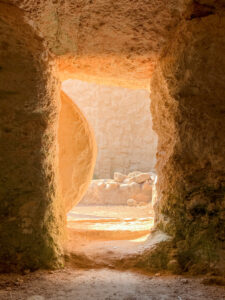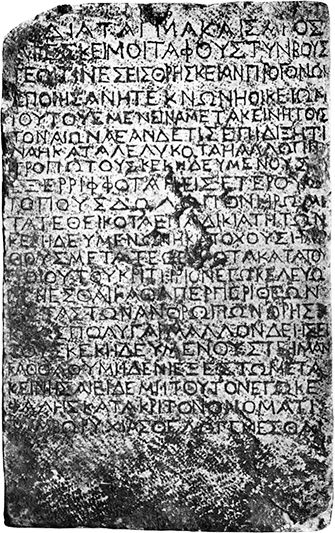By Dr. Don Bierle, FaithSearch President
The Testimony of Eyewitnesses
The apostle Peter claimed that “…we did not follow cleverly devised tales when we made known to you the power and coming of our Lord Jesus Christ, but we were eyewitnesses of His majesty” (2 Peter 1:16). In fact, ten post-resurrection appearances at different times and places are recorded in the Gospels.
The apostle Paul wrote that after Jesus’ resurrection He made numerous appearances to many individuals but also to “more than 500 hundred brethren at one time, most of whom remain until now…” (1 Corinthians 15:4-8). C.H. Dodd comments on this: “There can hardly be any purpose in mentioning the fact that most of the five hundred are still alive, unless Paul is saying, in effect, ‘the witnesses are still there [alive] to be questioned.’”
Not all appearances were to believers, either. For example, consider His brother James who had formerly rejected Him (John 7:5) and Saul on the road to Damascus (Acts 9:5). All the eyewitnesses were transformed from scared people hiding in the Upper Room into bold proclaimers of His resurrection. Indeed, all but one of the eleven remaining apostles died a martyr’s death, yet none ever denied seeing Jesus alive after His death, not even to save their very lives. People will die for what they believe to be true, but none will die for what they know to be false.
The Testimony of Jesus’ Graveclothes

Why are the linen wrappings mentioned four times in the Bible? (See John 19:40; 20:5-8.) Why were they a source of belief in the resurrection for Peter and John? Because what they saw could not be reconciled with Jewish burial practice. Jesus was prepared for burial by Nicodemus and Joseph of Arimathea with seventy-five pounds of aloes and myrrh to form a gummy substance which was used to paste strips of cloth wrapped around his body from the neck down (think “Egyptian mummy”). Within three days it would dry, making it impossible to remove without cutting it off in pieces. Instead, what they saw was the empty graveclothes – perhaps like the empty chrysalis of a caterpillar’s cocoon – and the head cloth folded neatly in a separate location. Only a supernatural bodily resurrection could explain what they saw.
The Testimony of the Nazareth Inscription
Archaeologists have found an edict of Caesar which was posted in Nazareth in the first century. It declares a penalty of death for grave robbing:
It is my pleasure that graves and tombs remain perpetually undisturbed… If, however, any charges that another has either demolished them, or has in any other way extracted the buried, or has maliciously transferred them to other places… against such a one I order that a trial be instituted… In case of violation I desire that the offender be sentenced to capital punishment on charge of violation of sepulcher.
The apostle Matthew tells us that the Jews explained away the resurrection by spreading widely the story of the “stolen body” (Matthew 28:11-15). Did the story get as far away as Rome and Caesar responded with this edict? Why just in Palestine? Why Nazareth and not Jerusalem? Perhaps all that Caesar heard was that there was unrest in Palestine because someone stole the body of a Nazarene (Matthew 2:23; Mark 14:67; Luke 24:19). So, logically, he would send the edict to Nazareth.
The Testimony of Prophecy
Is Jesus really God who died and rose again? Three unusual prophetic statements affirm this.
- Zechariah 12:1, 10 – “Thus declares the Lord… they will look on Me whom they pierced…” When was God pierced? (cf John 19:33-34) Jesus, speaking as God in the Old Testament, prophecies His own crucifixion.
- Revelation 1:8, 17-18 – “‘I am the Alpha and Omega,’ says the Lord God, ‘who is and who was and who is to come, the Almighty’… ‘and I was dead, and behold, I am alive forevermore…’” When did God die? Jesus, who had claimed to be God during His ministry (John 5:18; 19:7) here speaks as God to recall His own sacrificial death and resurrection.
- Psalm 16:10 – “For thou wilt not abandon my soul to Sheol; Neither wilt Thou allow Thy Holy One to undergo decay.” When was God put in the grave? The New Testament makes clear that this prophecy is in reference to Jesus, who as God was put in the grave and resurrected (Acts 2:24-32).
The Testimony of the Cross
Crucifixion is one of the most painful, cruel, and barbaric forms of execution ever known. “Excruciating” is a term we often use for severe pain and it literally means “out of crucifying.”
- In 40 B.C. in Rome, 2,000 people were crucified in a single day. During the siege of Jerusalem in A.D. 70 the Romans crucified 500 Jews per day. In the A.D. 330s, Emperor Constantine banned crucifixion after he became a Christian.
- Victims were required to carry just the patibulum (cross piece) to the site of execution. It would weigh about 75-100 pounds.
- The arms were first nailed to the cross piece and then the legs nailed to the upright with the knees bent. This allowed the victim to push the body up and sustain breathing, prolonging life but with excruciating pain. Breaking the legs prevented this action and the victim would quickly suffocate (John 19:31-33). Jesus’ bones, however, were not broken. Thus, He fulfilled His role as our Passover Lamb (Exodus 12:42-46; John 19:33-36).
- Crucifixion was only used for slaves and the worst criminals. It gave the family of the victim ultimate stigma and disgrace. Most crucifixion victims were left out in the open to be eaten by carnivorous birds and animals for further dishonor. In Jewish culture, burial was essential for an honorable death. The act of Joseph of Arimathea and Nicodemus provided Jesus that honor of a burial (John 19:38-42).
- The irony of Jesus’ crucifixion is that the cross has subsequently become a symbol of victory with eternal significance. He died for sin revealing the power of God over the cross and death (1 Corinthians 1:18; 2:2; 1 Peter 2:24).
- The irony of Jesus’ crucifixion is that the cross has become the identity of the believer with Jesus as a symbol of discipleship (Galatians 2:20; Matthew 16:24; Colossians 2:13-14).
“Woman, why are you weeping?” —Jesus (John 20:11, 15)
The apostle John points out that the resurrection “blindsided” His disciples early on that first Easter morning: “For as yet they did not understand the Scripture, that He must rise again from the dead” (v.9). This is illustrated by Mary Magdalen as she wept in the garden seeking the body of Jesus (John 20:11-18). Lenski, in his New Testament commentary on John 20, makes a profound observation: “Indeed, why does she weep? – when we should all have had cause to weep to all eternity if what she wept for had been given her, the dead body of her Lord!”
The angel said, “He is not here, for He has risen!” (Matthew 28:6).
Is the Resurrection Important?
There are 300 verses in the New Testament with a reference to resurrection. It is mentioned in twenty-three of the twenty-seven New Testament books. It is a point of emphasis in all four Gospels. The apostle Paul dedicated an entire chapter to resurrection (1 Corinthians 15). J.N.D. Anderson, in his book, Evidence for the Resurrection, put the resurrection of Jesus in perspective:
Easter is not primarily a comfort, but a challenge. Easter’s message is either the supreme fact in history or it is a gigantic hoax… Either the resurrection is infinitely more than a beautiful story or else it is infinitely less. If it is true, then it is the supreme fact of history; and to fail to adjust one’s life to its implications means irreparable loss.
Jesus said, “I am the resurrection and the life; he who believes in Me shall live even if he dies” (John 11:25).
A Personal Testimony
The resurrection has special meaning for Vernee and me. I was returning to the Seattle airport from a weekend of ministry when the pastor I had just left called to say my wife was desperately trying to reach me. I called and heard her sobbing. “What’s wrong?” I asked. “Steve’s dead!” was her heartbreaking response.
It was a message no parent wants to hear. I was speechless. Steve is the younger of our two sons: he was forty-four years old, with a wife and three sons. Steve drowned while successfully rescuing his middle son, from certain death in the Pacific Ocean off the coast of California.
I couldn’t stop the devastating thought that Vernee and I had just lost half of our family. Our grief had temporarily blinded us to what we know in our hearts to be true: We still have two sons!
Steve first prayed to trust Jesus as his Savior on my lap at four years of age, and affirmed that commitment as a teen-ager. It will never be the same without Steve here. Yet, as the Holy Spirit revealed through the apostle Paul:

We do not want you to be uninformed, brethren, about those who are asleep, that you may not grieve as do the rest who have no hope. For if we believe that Jesus died and rose again, even so God will bring with Him those who have fallen asleep in Jesus (1 Thessalonians 4:13-14).
Based on God’s promise, Vernee and I look forward to a glorious reunion with Steve! This is the comfort of the resurrection (v. 18).





